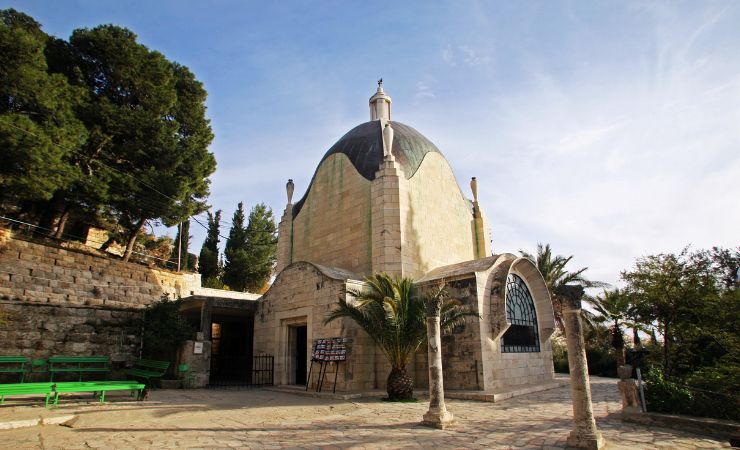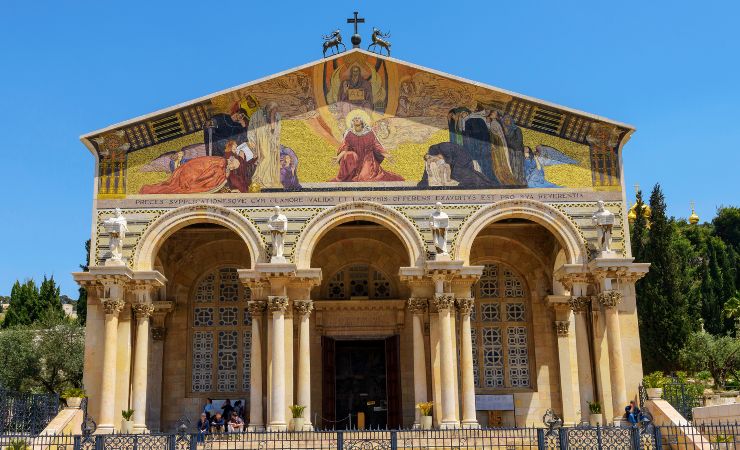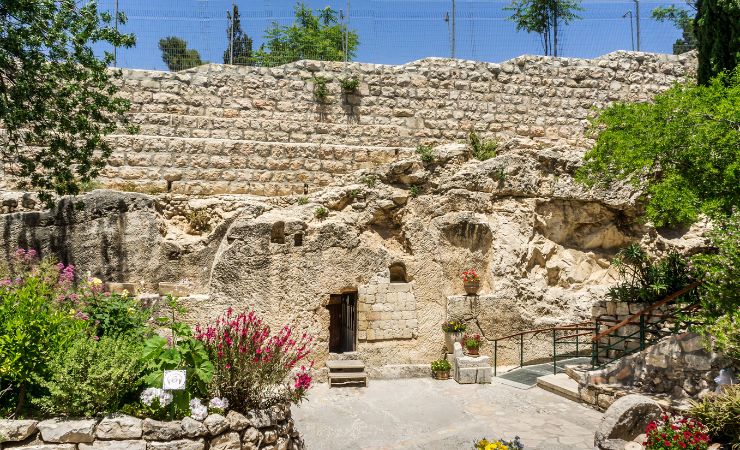Qumran and the Dead Sea Scrolls: A Window into Ancient Judaism and Early Christianity
Located in the arid landscape near the northwest shore of the Dead Sea, Qumran is a site of profound historical and religious importance. This area became the stage for one of the greatest archaeological discoveries of the 20th century: the Dead Sea Scrolls. These ancient manuscripts not only illuminate the religious and social life of Second Temple Judaism but also invite intriguing questions about their connection to the roots of Christianity.
Qumran’s Geographical Location
Qumran is located approximately 1.5 kilometers from the Dead Sea’s northwest shoreline, set against the stark cliffs of the Judean Desert. The harshness of the desert contrasts sharply with the ingenuity of the Jewish sect believed to have lived there. The settlement’s proximity to caves and the dry climate provided the ideal conditions for preserving ancient scrolls for over two millennia.
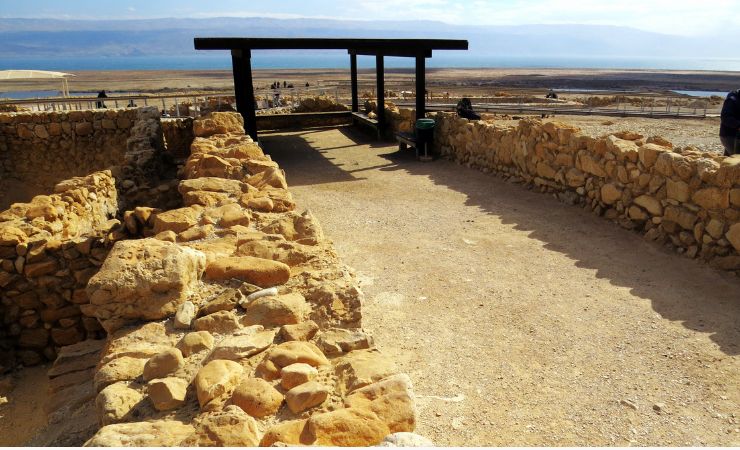



Connections to Early Christianity
The practices of the Qumran community, particularly their focus on purification, communal living, and messianic expectations, share intriguing parallels with early Christianity. Some scholars speculate that John the Baptist might have been influenced by Essene teachings, given his emphasis on ritual cleansing and apocalyptic warnings. While no direct evidence links Jesus or his disciples to the Qumran sect, their shared eschatological worldview suggests a common cultural and religious milieu.
Who Lived in Qumran: The Essenes as Described by Flavius Josephus
Excavations of Qumran began in the 1950s, led by archaeologist Roland de Vaux. The findings revealed a small but highly organized settlement, designed to support a communal lifestyle centered on religious practices. Key structures and artifacts uncovered include:
- The Scriptorium: This room contained long tables and inkwells, suggesting it was used by scribes to copy texts. Some of the Dead Sea Scrolls may have been written here.
- Ritual Baths (Mikva’ot): Numerous mikva’ot were discovered, highlighting the community’s emphasis on ritual purity.
- Dining Hall: Likely used for communal meals, this space reflects the sect’s organized and shared way of life.
- Pottery Workshop: Evidence of pottery production, including jars similar to those that housed the Dead Sea Scrolls, was found here.
- Cemetery: A large burial ground containing over 1,000 graves, primarily of males, underscores the ascetic and possibly celibate nature of the community.
These discoveries paint a picture of a sectarian group living in disciplined seclusion, possibly the Essenes described by ancient sources like Flavius Josephus.
Who Lived in Qumran: Flavius Josephus and the Essenes
Flavius Josephus, a Jewish historian of the 1st century CE, provides one of the earliest and most detailed accounts of the Essenes in his works The Jewish War and Antiquities of the Jews. He describes them as a Jewish sect distinct from the Pharisees and Sadducees, emphasizing their ascetic lifestyle, communal living, and devotion to purity.
Josephus’ descriptions align closely with the practices inferred from the Qumran site:
- Communal Ownership: The Essenes pooled resources and lived collectively, mirroring the communal structures found at Qumran.
- Purity and Ritual Cleansing: Josephus highlights their frequent use of water for purification, reflected in the many mikva’ot at Qumran.
- Apocalyptic Beliefs: The Essenes awaited divine intervention and a final battle between good and evil—a belief also echoed in sectarian Dead Sea Scrolls like the War Scroll.
Some scholars suggest that the Essenes’ beliefs and practices influenced early Christian figures like John the Baptist, who emphasized repentance and ritual purification.
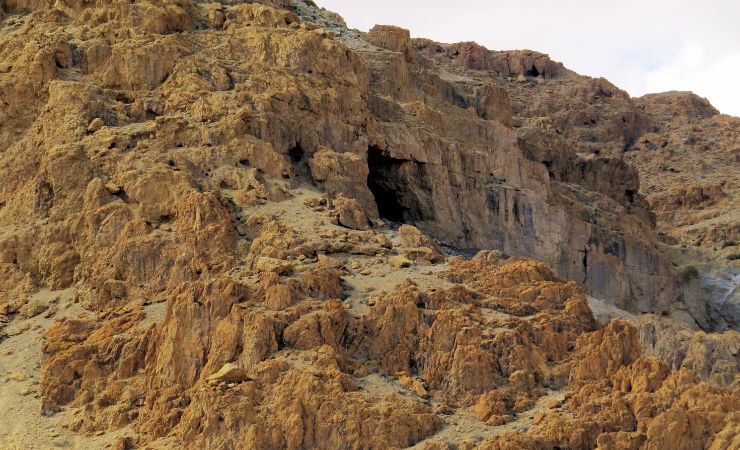
The Dead Seas Scrolls
The Discovery of the Scrolls
The discovery of the Dead Sea Scrolls began in 1947, when a Bedouin shepherd searching for a stray goat stumbled upon a cave near Qumran. Inside, he found clay jars containing ancient manuscripts. This accidental find sparked a decade of exploration, during which archaeologists and local Bedouins uncovered eleven caves filled with thousands of fragments from over 900 manuscripts. Written in Hebrew, Aramaic, and Greek, these texts date back to the 3rd century BCE to the 1st century CE. Among the first scholars to recognize their significance was Eliezer Lipa Sukenik, an archaeologist from the Hebrew University of Jerusalem. In 1947, amid the political turmoil leading up to Israel’s independence, Sukenik made a daring journey to Bethlehem to acquire three scrolls. These included a nearly complete Isaiah Scroll, a commentary on the Book of Habakkuk, and the “Community Rule,” a text outlining the sect’s regulations. Sukenik’s son, Yigael Yadin, later played a pivotal role in expanding the collection. In 1954, Yadin successfully negotiated the purchase of four additional scrolls, which had been smuggled to the United States by an antiquities dealer. These included the War Scroll and the Genesis Apocryphon. Thanks to the combined efforts of Sukenik and Yadin, these invaluable manuscripts were preserved and brought to Israel, where they are now housed in the Shrine of the Book at the Israel Museum.
Contents of the Dead Sea Scrolls
The Dead Sea Scrolls include a wide variety of texts:
Biblical Texts: These are the oldest surviving copies of many books of the Hebrew Bible, such as Isaiah, Psalms, and Deuteronomy. Notably, the only book absent is Esther.
Sectarian Writings: Texts like the Community Rule and War Scroll offer insights into the beliefs, rituals, and apocalyptic expectations of the Qumran sect.
Apocryphal and Pseudepigraphal Works: These include books like Jubilees and Enoch, which were not included in the Hebrew Bible but were influential in Jewish thought.
Why is the Book of Esther Missing?
The absence of the Book of Esther among the Dead Sea Scrolls has been a subject of significant debate among scholars. One possible explanation is theological rejection; the sect at Qumran may have excluded Esther because of its lack of explicit mention of God and its focus on secular events, which might have conflicted with their strict religious priorities. Another theory relates to disputes over the biblical canon during the Second Temple period. Esther’s inclusion in the Jewish canon was still being debated at the time, and the Qumran community may not have recognized it as an authoritative text. Lastly, it is also possible that Esther was originally present at Qumran but failed to survive due to natural deterioration or loss over the centuries.
Sources and Additional Information
Nearby Sites
- Masada: A UNESCO World Heritage Site and a dramatic symbol of Jewish resistance against Rome.
- Ein Gedi Nature Reserve: A lush desert oasis with waterfalls, wildlife, and hiking trails.
- Ein Gedi Synagogue: An ancient synagogue showcases the spiritual and artistic heritage of the Judean Desert.
- Qasr el-Yahud, located near the Jordan River, is revered as the traditional site where John the Baptist baptized Jesus, making it a significant pilgrimage destination for Christians worldwide.

